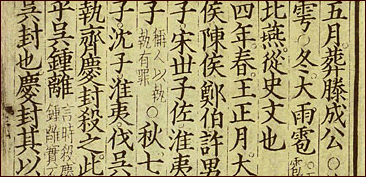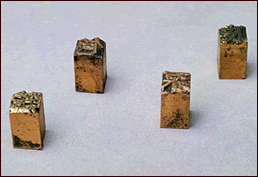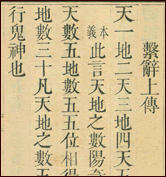Technological Advances during the Song
Printing
By the 9th century, Chinese craftsmen had developed a way to mass produce books by carving words and pictures into wooden blocks, inking them, and then pressing paper onto the blocks. Each block consisted of an entire page of text and illustrations.
As in Europe centuries later, the introduction of printing in China dramatically lowered the price of books, thus aiding the spread of literacy. Inexpensive books also gave a boost to the development of drama and other forms of popular culture. The storytellers depicted in the Beijing Qingming scroll (below) may have benefited from “prompt books” that would help them review the stories that they told orally to their audiences.
Movable Type
In the 11th century movable type (one piece of type for each character) was invented. Movable type was never widely used in China because whole-block printing was less expensive, but when movable type reached Europe in the 15th century, it revolutionized the communication of ideas.
Movable type was first created by Bi Sheng (990-1051), who used baked clay, which was very fragile. The Yuan-dynasty official Wang Zhen is credited with the introduction of wooden movable type, a more durable option, around 1297.(1) Cast-metal movable type began to be used in Korea in the early 13th century, and the first font is believed to have been cast there in the 1230s.
More about the History of Printing in China
• Gems in the Rare Books Collection [National Palace Museum]
A brief introduction and two topics: 1) Understanding Rare Books (including the evolution of printing in China); 2) Appreciating Rare Books (including script types and bookbinding). With many images
of rare books.
• Treasures of the Forbidden City: Palace Imprints of the Ch’ing Dynasty [National Palace Museum]
With information and examples of various types of publications, plus a section on printing techniques and bookbinding.
For Further Reading
• “Paper,” in Commerce and Society in Sung China, by Shiba Yoshinobu (Ann Arbor, The University of Michigan Center for Chinese Studies, 1970), 103-111.
![]()
Notes
(1) Michael Twyman, The British Library Guide to Printing: History and Techniques (Toronto: University of Toronto Press, 1999), 20-21.




